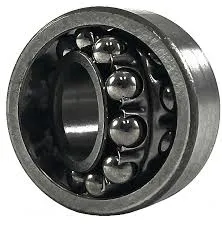
Dec . 27, 2024 10:40 Back to list
four types of roller bearings
Understanding the Four Types of Roller Bearings
Roller bearings are vital components used in various mechanical systems to reduce friction between moving parts. By facilitating smooth motion, they enhance the efficiency and longevity of machinery. Roller bearings, in particular, come in several variations, each designed for specific applications and load conditions. In this article, we will delve into the four primary types of roller bearings cylindrical, tapered, spherical, and needle roller bearings.
1. Cylindrical Roller Bearings
Cylindrical roller bearings are designed to support heavy radial loads and offer high speed capabilities. They consist of rollers that are cylindrical in shape, which allows for a large contact area with the raceway. This design minimizes the stress on the rollers, resulting in lower friction and reduced wear.
Cylindrical roller bearings come in several configurations, including single-row, double-row, and multi-row designs. Single-row cylindrical roller bearings are typically used in applications where high radial loads are present, such as in electric motors, gearboxes, and machine tool spindles. Their ability to accommodate misalignment due to their construction makes them a popular choice in high-performance applications.
2. Tapered Roller Bearings
Tapered roller bearings are engineered to handle both radial and axial loads, making them versatile for various applications. The rollers in this type of bearing are tapered, allowing them to make contact with the raceway at a specific angle. This design allows for the bearing to support combined loads effectively.
These bearings are commonly found in car wheel hubs, axles, and other machinery where both radial and axial forces are present. The ability to adjust for preload and provide excellent load distribution makes tapered roller bearings invaluable in ensuring stability and durability in rotating systems. Moreover, they come in various designs, including single-row and double-row, catering to different load handling requirements.
four types of roller bearings

3. Spherical Roller Bearings
Spherical roller bearings are unique due to their outer ring having a special spherical shape that allows for self-alignment. This design is particularly advantageous in applications where misalignment might occur due to installation or operational factors. The rollers in spherical roller bearings are arranged in a way that they can accommodate radial loads while also being capable of handling some axial loads in both directions.
These bearings are frequently used in applications such as mining equipment, construction machinery, and paper mills, where heavy loads and potential misalignments are common. Their self-aligning feature minimizes the risk of premature failure, increasing the reliability of the machinery they serve.
4. Needle Roller Bearings
Needle roller bearings are compact and lightweight bearings that utilize long, thin rollers resembling needles. Despite their smaller size, they can support substantial radial loads due to their large surface contact area with the raceway. This attribute allows them to be used in space-constrained applications while still providing excellent load-carrying capacity.
Needle roller bearings come in a variety of designs, including drawn cup, thrust, and caged configurations. They are commonly found in automotive applications, small electric motors, and various industrial machines. The compact design combined with the ability to handle high loads makes needle roller bearings a popular choice in numerous engineering applications.
Conclusion
In summary, roller bearings play a crucial role in the functionality and efficiency of various mechanical systems. The four main types of roller bearings – cylindrical, tapered, spherical, and needle roller bearings – are tailored to meet specific load conditions and applications. Understanding the unique properties and advantages of each type is essential for engineers and designers to select the appropriate bearing for their needs, ensuring optimal performance and longevity of machinery. As technology continues to evolve, advancements in bearing design and materials will undoubtedly enhance their capabilities further, paving the way for even greater efficiency in mechanical systems.
Latest news
-
Comprehensive Guide to 6201z 12.7 Bearing – Specs, Uses & Vendors | Ary Bearing
NewsNov.21,2025
-
Understanding the 6205 Bearing Size: Specs, Uses, and Global Impact
NewsNov.21,2025
-
Comprehensive Guide to 6211 Bearing Dimensions for Global Industrial Use
NewsNov.20,2025
-
Discover the Reliable 6013 2rs Bearing – Specs, Benefits & Global Applications
NewsNov.20,2025
-
Comprehensive Guide to Understanding 6311 Bearing Price and Its Global Impact
NewsNov.19,2025
-
Comprehensive Guide to 6805 zz Bearing – Specs, Uses & Benefits
NewsNov.19,2025
